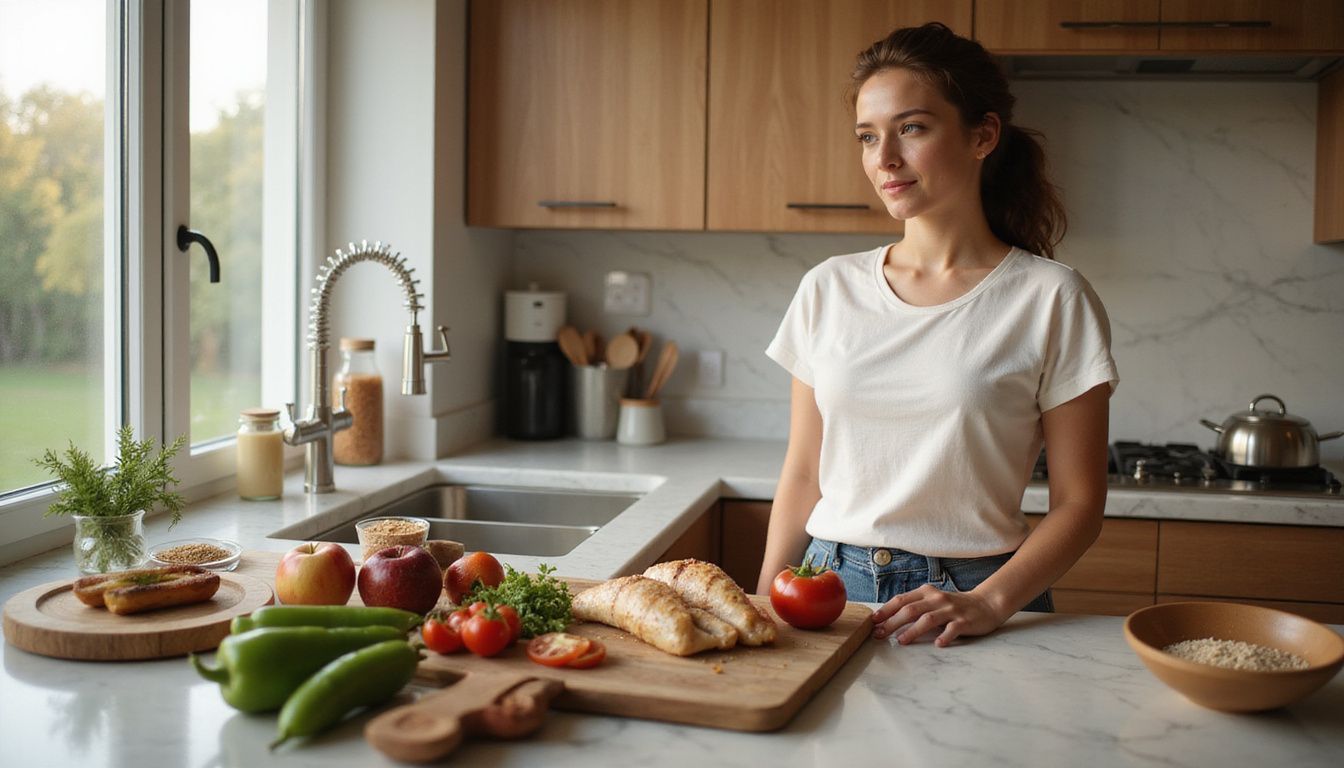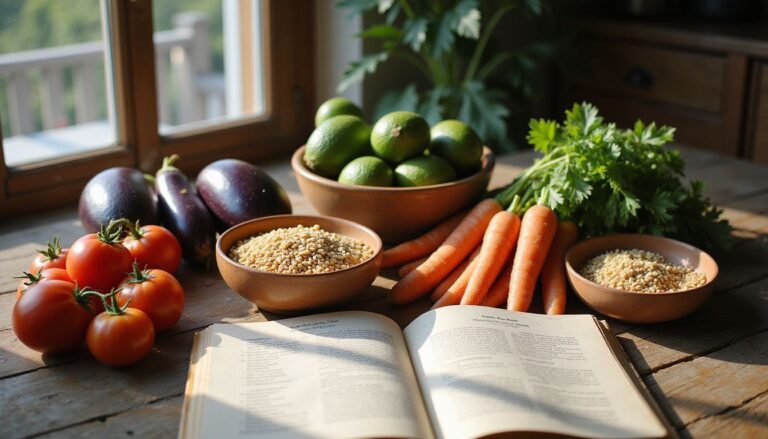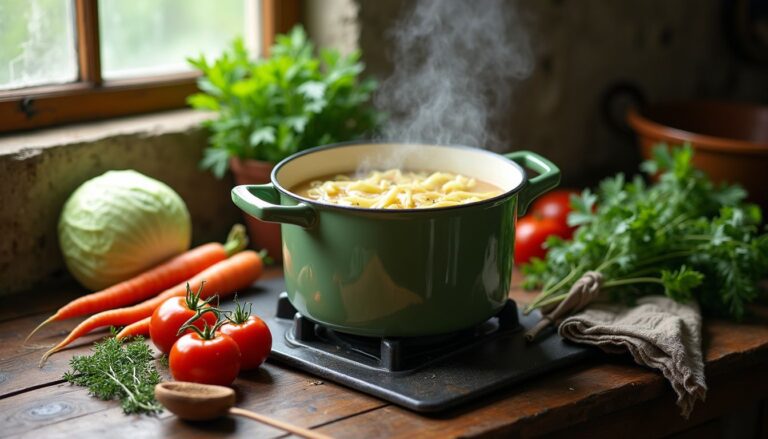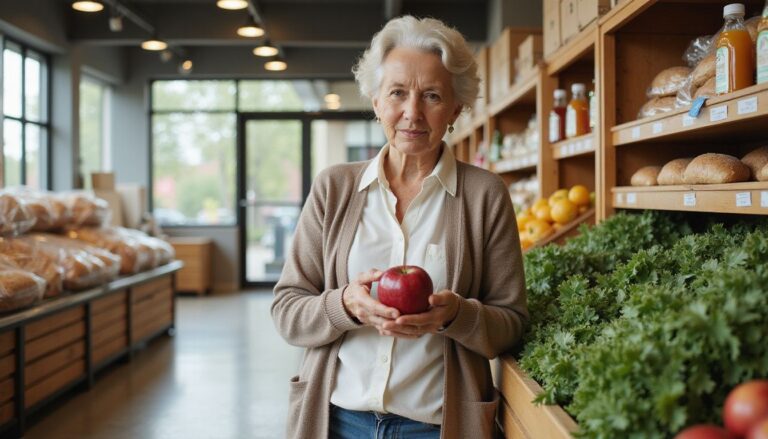Discover The Best Low Calorie Foods For Feeling Full And Nourished
Our Nutrition Assistant AI Suite will transform your body. You will lose fat, get toned, and build muscle. Gain confidence and optimal health.
You want meals that fill you up without weighing you down. Choosing low-calorie foods can help you feel satisfied, support a healthy weight, and lower the risk of conditions like type 2 diabetes.
This guide shows how nutrient-dense foods that are low in calories supply fullness, steady energy, and essential nutrition without extra fat or added sugar. Explore which filling foods help you feel nourished at every meal.
Key Takeaways
- Low-calorie foods with fiber or protein, like leafy greens, broccoli, and Greek yogurt, can help you feel full with fewer than 100 calories per serving.
- Replacing high-calorie sides with fruits and vegetables can reduce calorie intake by up to 150 calories per meal [1].
- Fiber, protein, and vitamins such as C and K support heart and immune health and may reduce cholesterol and type 2 diabetes risk over time.
- Water-rich picks, such as watermelon at 46 calories per cup and oranges at about 62 calories each, boost hydration and fullness.
- Reading labels helps you avoid hidden sugars and sodium in packaged “low-calorie” items that can work against your goals.
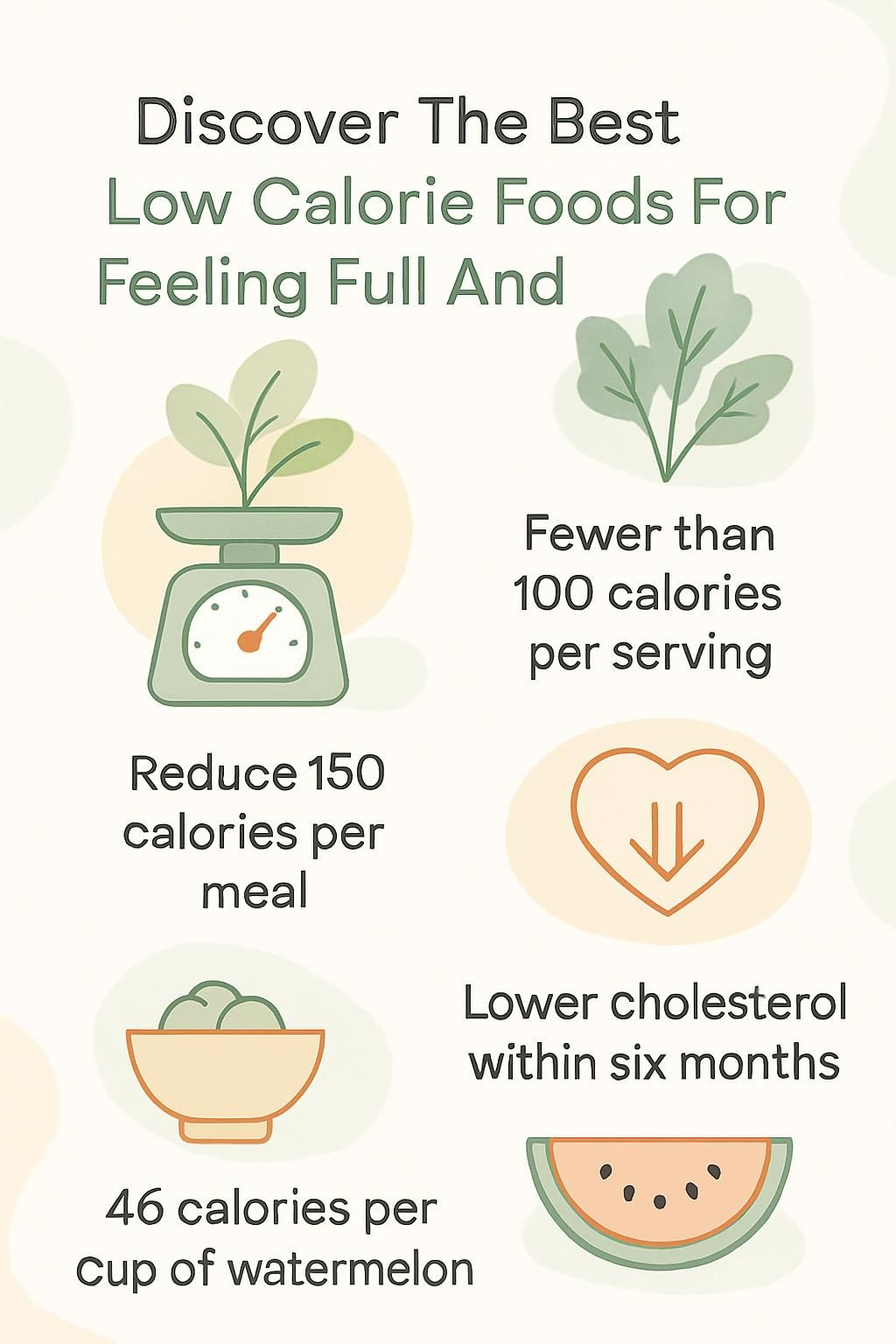
Why Choose Low-Calorie Foods?
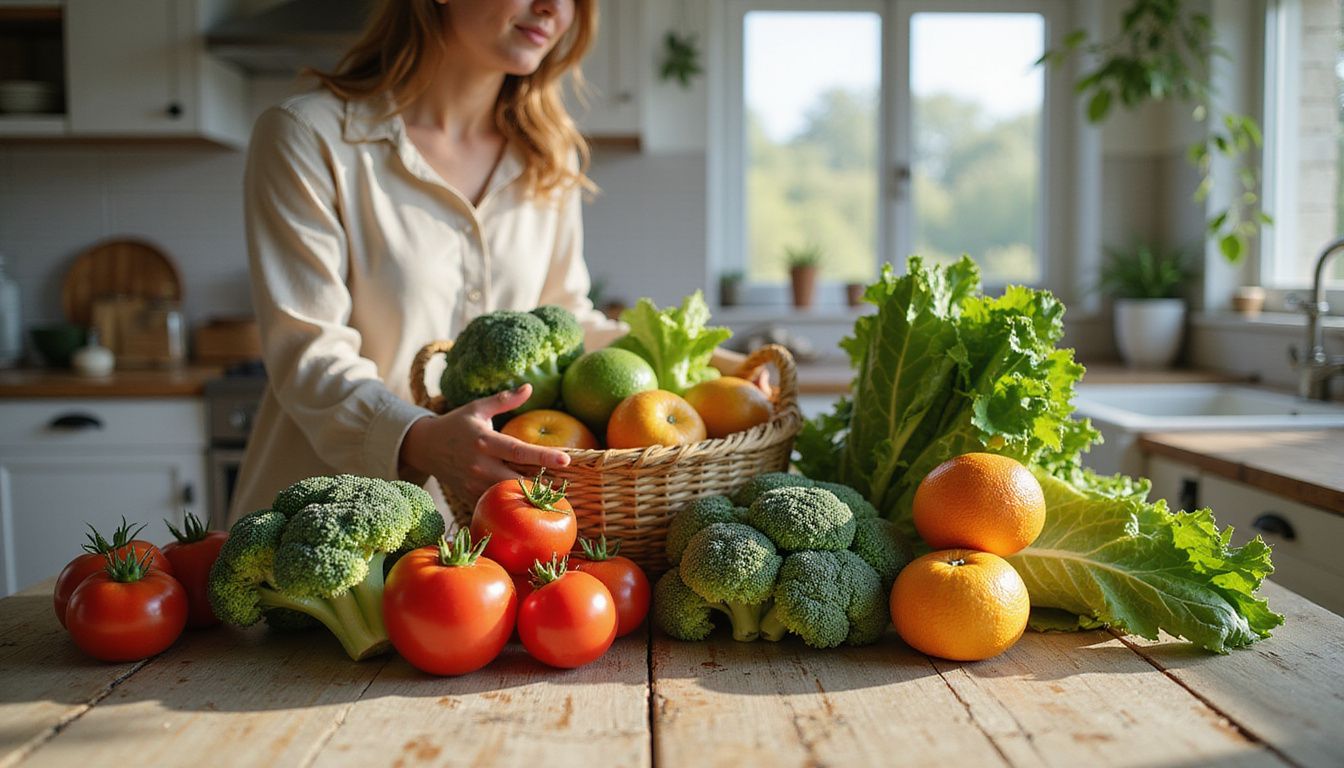
Low-calorie foods help you reach weight goals while protecting your health. They deliver vitamins and minerals, and they keep you satisfied with fewer calories per serving.
How do low-calorie foods help with weight management?
These foods let you eat larger, more satisfying portions without a big calorie hit. Leafy greens, broccoli, and cauliflower add volume and texture with very few calories per serving.
High water and dietary fiber slow digestion, which helps curb hunger and late-day snacking. Swapping a cup of salad or steamed veggies for a heavier side can trim up to 150 calories per meal [1].
Simple changes work well. If you switch from refined grains to whole grain bread or brown rice, you often feel full longer with fewer total calories.
That steady fullness makes it easier to keep a healthy eating plan day after day.
What health benefits come from eating low-calorie foods?
Meals built around low-calorie fruits, vegetables, beans, and lean protein support heart health and weight control. These choices tend to be lower in saturated fat and sodium.
The American Heart Association notes that eating patterns rich in vegetables, legumes, and low-fat dairy align with lower cardiovascular risk. Foods like kale, beans, and low-fat cottage cheese bring fiber that helps manage cholesterol.
Nutrient-rich foods with antioxidants, such as vitamin C or lycopene in tomatoes, support immune function while keeping calorie intake in check. Water-rich options, like watermelon at about 46 calories per cup, aid hydration and energy production.
Aim for a nutrient balance that helps you feel full and energized. You can also see positive markers, such as improved cholesterol, within months when you consistently choose low-calorie whole foods.
[1] Systematic review, American Journal of Clinical Nutrition, 2020.
How do low-calorie foods keep you feeling full longer?
Fiber and water are the secret. Vegetables like broccoli and romaine slow stomach emptying and add bulk, so you stay full longer.
Water-rich foods, such as oranges and watermelon, increase meal volume without many calories. That stretch in your stomach sends fullness signals to your brain.
Protein supports fullness too. Lean choices like chicken breast, eggs, low-fat cottage cheese, and Greek yogurt offer high protein with about 100 calories or less per serving.
Choose a high-fiber breakfast. A bowl of oats usually keeps you satisfied longer than sugary cereal, which makes healthy choices easier later in the day.
Key Characteristics of Low-Calorie Foods
Successful low-calorie foods are usually high in fiber and water and low in fat and calories. They are nutrient-dense, which means strong nutrition per calorie.
Why is high water content important in low-calorie foods?
Water adds volume without adding calories. Foods like cucumbers, oranges, and watermelon are low in fat and calories, yet they feel plentiful on your plate.
For example, 1 cup of sliced cucumber has roughly 16 calories and helps with hydration. That makes it easier to enjoy larger portions for fewer calories.
Choosing water-rich foods also supports digestion and steady energy. Dietitians suggest pairing water and fiber for a snack that satisfies without excess calories.
Picking fruits and vegetables with high water content is a simple way to control calories while managing hunger, shares a registered dietitian in the United States.
Many water-rich foods also contain fiber. This combination often keeps you satisfied for several hours after a meal.
How does fiber contribute to fullness and nutrition?
Dietary fiber slows digestion and adds bulk, which helps you feel full on fewer calories. Good sources include broccoli, spinach, unsalted sunflower seeds, and oatmeal.
Soluble fiber absorbs water and forms a gel in your gut. This texture slows the rise of blood sugar and helps manage cravings.
High-fiber diets support gut health and may lower the risk of obesity and type 2 diabetes. They also help reduce cholesterol and support steady energy during the day.
Evidence links higher fiber intake with greater satiety and lower calorie intake across the day [2]. Simple snacks like air-popped popcorn or raw carrot sticks can be both filling and light.
[2] Slavin JL et al., 2020, systematic review on fiber and satiety.
What essential nutrients should low-calorie foods provide?
Look for fiber, protein, and a range of vitamins and minerals. For example, broccoli and spinach offer fiber, vitamin C, and calcium.
Greek yogurt is rich in protein for relatively few calories. Small amounts of healthy fats, such as 1 tablespoon of olive oil or nut butter, help you absorb fat-soluble vitamins.
Colorful fruits such as oranges and grapes contain helpful plant compounds called phytochemicals. These support immune function while keeping your daily calorie count modest.
Best Low-Calorie Vegetables for Feeling Full
Some vegetables deliver fiber, water, and nutrients for very few calories. These standouts help you fill your plate and your stomach.
What makes broccoli a good low-calorie, filling vegetable?
One cup of broccoli has about 25 calories. It brings fiber and water that support fullness along with vitamin C and beta carotene for health.
Steam it, sauté it with garlic, or add it to soups and pasta. Broccoli boosts volume and nutrition without many calories.
Try replacing half the meat in a stir-fry with broccoli. Many people feel just as satisfied while keeping calories lower.
How does cauliflower help with fullness on a low-calorie diet?
Cauliflower is about 92 percent water and has roughly 25 calories per cup. The fiber slows digestion and steadies blood sugar, which reduces cravings.
Use it as cauliflower rice, mashed cauliflower, or as a pizza crust ingredient. You get a satisfying texture with fewer calories than typical starches.
Swapping in riced cauliflower for part of the flour or grains in recipes can cut calories while keeping meals hearty and filling.
Why is kale a nutritious low-calorie vegetable choice?
One cup of raw kale has around 33 calories. It is an excellent source of vitamin A, vitamin C, and vitamin K, plus fiber for fullness.
Enjoy kale raw in salads, blended into smoothies with a splash of lemon juice, or sautéed with a little vinegar or ginger. These add flavor without heavy sauces.
Eating more kale supports weight goals and delivers antioxidants that help protect your cells.
How does spinach support feeling full with low calories?
Spinach contains about 23 calories per 100 grams. It is rich in fiber and water, which slow digestion and support fullness.
Because spinach is light, you can add a lot to salads, sandwiches, and omelets without many calories. The water helps hydrate you and the fiber supports regularity.
Meals with leafy greens often increase satiety signals for hours after eating [3]. That helps manage calorie intake over the day.
[3] Hession M et al., 2009, review of diet strategies and satiety.
What benefits does zucchini offer as a low-calorie vegetable?
One cup of zucchini has roughly 20 calories. The high water content boosts fullness without adding many calories.
It also provides fiber, vitamin C, potassium, and antioxidants. Grill or sauté zucchini to serve with chicken or beef for a light, balanced plate.
Best Low-Calorie Fruits for Sustained Energy
Fruits can be light on calories and big on hydration and vitamins. The right choices support steady energy between meals.
Why are berries like strawberries and blueberries good low-calorie fruits?
Strawberries are about 50 calories per cup. Blueberries are roughly 85 calories per cup. Both have fiber and water that fight hunger.
They supply vitamin C and antioxidants while keeping calories modest. Add berries to oatmeal or Greek yogurt for a naturally sweet breakfast.
Regularly choosing berries can help reduce daily calories while keeping nutrition strong.
How does grapefruit contribute to sustained energy?
Grapefruit has a low glycemic index, which means its natural sugars release slowly. Half a grapefruit has about 52 calories plus fiber and vitamin C.
Eat it as a morning snack or add segments to salads. The juice and water content help with hydration and satiety.
What makes kiwi a nutritious low-calorie fruit?
One medium kiwi has about 42 calories and more than 60 milligrams of vitamin C. It also offers fiber, potassium, and vitamin K.
The high water content supports hydration and fullness. Pair sliced kiwi with Greek yogurt for a light breakfast that keeps you satisfied.
How do oranges support energy while being low in calories?
One medium orange contains about 62 calories, with natural sugars and fiber that support stable energy. It also provides vitamin C, potassium, and B vitamins.
Enjoy an orange after a walk or as a snack. The mix of water and fiber helps you feel refreshed without extra fat or added sugar.
Why is watermelon a hydrating, low-calorie fruit choice?
Watermelon is more than 90 percent water and has about 46 calories per cup. It helps you rehydrate while adding volume to your meal.
It supplies vitamins A and C and potassium for fluid balance. For a balanced snack, try watermelon with a spoonful of Greek yogurt or a few nuts.
Top Low-Calorie Protein Sources
Protein keeps you full and supports muscles. These low-calorie choices make it easier to hit your goals.
How does chicken breast provide lean protein with low calories?
Three ounces of cooked chicken breast delivers about 26 grams of protein for roughly 128 calories. Skinless cuts keep saturated fat low, which supports heart health.
Add chicken to salads, wraps, or stir-fries for a filling meal with a modest calorie count. It is a practical pick for both athletes and busy families.
What low-calorie benefits do fish like salmon and tuna offer?
Salmon has about 121 calories and over 17 grams of protein per 3-ounce serving. Tuna offers about 99 calories and around 22 grams of protein in the same portion.
Both provide omega-3 fats that support brain and heart health. Grill salmon or add canned tuna to a vegetable-packed salad for variety without extra calories.
Why are eggs a good low-calorie protein source?
One large egg has about 70 calories and roughly 6 grams of complete protein. The amino acids in eggs support muscle repair and growth.
Eggs also supply vitamin D, choline, selenium, and B vitamins with very little sugar. They fit into many dishes, from breakfast scrambles to grain bowls.
How does Greek yogurt support fullness with low calories?
Six ounces of nonfat or low-fat Greek yogurt has about 15 grams of protein and around 100 calories. The thicker texture slows eating and helps your body sense fullness.
Pick plain varieties to avoid added sugar. Stir in fruit or a few nuts for flavor and crunch without a big calorie increase.
What makes tofu a valuable low-calorie protein option?
Three ounces of firm tofu offers around 70 calories and nearly 8 grams of protein. It also brings iron and calcium to support energy and bone health.
Tofu absorbs flavors well. Cube and pan-sear it with garlic powder and paprika, then add to salads or bowls for a satisfying, plant-based meal.
Other Filling and Nourishing Low-Calorie Foods
Some light choices deliver big portions and steady energy. These options are easy to prep and enjoy.
How does air-popped popcorn help with fullness on a low-calorie diet?
Three cups of air-popped popcorn have about 93 calories and nearly 3.5 grams of fiber. The volume and fiber work together to curb hunger.
The popped kernels take up space in your stomach, which helps you feel full compared to calorie-dense chips. An afternoon serving can help prevent overeating at dinner.
Why is oatmeal considered a nourishing low-calorie food?
One cup of cooked oatmeal has about 150 calories and 4 grams of fiber. Its soluble fiber forms a gel that slows digestion and reduces spikes in hunger.
Oatmeal also provides iron, magnesium, and B vitamins for steady energy. Make it with water or low-fat milk to keep calories modest and texture creamy.
Many people find a bowl of oats in the morning keeps cravings down compared to sugary cereal.
What role does vegetable broth play in a low-calorie diet?
Low-sodium vegetable broth has about 10 to 15 calories per cup. It adds warmth and volume to soups and stews without a big calorie cost.
Use broth instead of oil or cream when possible. You get hydration and flavor while keeping total calories lower.
Pair vegetable broth with fiber-rich add-ins such as brown rice or beans to boost satiety.
How does brown rice support fullness while being low in calories?
One cup of cooked brown rice has around 215 calories and about 3.5 grams of fiber. The combination of fiber and complex carbohydrates provides steady energy and longer fullness.
It also delivers magnesium, phosphorus, selenium, and B vitamins. Combine brown rice with vegetables and lean protein to feel satisfied through the afternoon.
Tips for Incorporating Low-Calorie Foods into Your Diet
Small changes add up. Use these simple steps to make low-calorie eating practical and tasty.
How can I include more fruits and vegetables in every meal?
Add berries or sliced bananas to oatmeal or low-fat Greek yogurt at breakfast. For lunch, choose a side salad with spinach, tomatoes, cucumbers, and carrots.
Snack on apple slices or baby carrots instead of chips. At dinner, fill half your plate with steamed broccoli, roasted cauliflower, or stir-fried zucchini.
Mix vegetables into omelets or blend kale into smoothies. Rotate fruits during the week so flavors stay fresh and interesting.
What are the best lean protein sources to choose?
Grilled chicken breast gives about 26 grams of protein per 3 ounces with roughly 140 calories. Salmon and tuna offer around 20 to 22 grams of protein plus heart-healthy omega-3s.
Eggs provide about 6 grams of protein each and work in many recipes. Greek yogurt can deliver up to 17 grams per cup with fewer calories than many dairy products.
Tofu provides about 10 grams per half cup with very little saturated fat. These choices help you feel full while keeping calorie intake reasonable.
How do spices and herbs add flavor without extra calories?
Spices and herbs add big flavor for almost no calories. Try garlic, black pepper, basil, cumin, or chili powder.
One tablespoon of chopped parsley has fewer than 2 calories, while a tablespoon of chili powder has about 6 calories. Spice blends like Italian seasoning or curry powder make vegetables and lean meats more exciting.
Sprinkle dried oregano on roasted vegetables to avoid heavy sauces. Flavor makes low-calorie meals easier to enjoy.
Why is reading food labels important for monitoring calories?
Labels tell you calories per serving and the actual serving size. Packages often contain more than one serving, which can double or triple calories quickly.
Labels also reveal added sugars and fats that raise calories. Checking before you buy helps you pick foods with more fiber and protein, which support fullness.
Mistakes to Avoid When Choosing Low-Calorie Foods
Some low-calorie picks can derail your efforts. Watch for these common pitfalls so you stay on track.
How can hidden sugars and sodium affect low-calorie food choices?
Packaged foods labeled as “low calorie” often rely on added sugar or sodium to boost taste. Some low-calorie yogurts contain up to 15 grams of added sugar per serving, which increases calories and can spike blood sugar.
Sodium hides in canned soups and frozen vegetable mixes with sauce. High sodium can cause water retention and raise blood pressure. Reading labels protects your plan.
- U.S. Department of Agriculture (USDA) FoodData Central Database
- Centers for Disease Control and Prevention (CDC), Sodium Facts
Why is nutrient balance important in low-calorie meals?
Your body needs vitamins, minerals, protein, and healthy fats to function well. If you cut calories without a plan, you might feel tired or lose muscle.
Calcium supports bones, iron helps blood carry oxygen, and fiber aids digestion. A mix of vegetables, fruits, whole grains, and lean proteins supports fullness and health.
Balanced meals reduce cravings because key nutrients are covered. That makes sticking with a healthy diet much easier.
What are the risks of relying on processed
Many processed foods add sugars, sodium, or unhealthy fats even if calories look low. They often lack fiber and key vitamins, which makes it harder to feel full.
Highly processed choices can spike blood sugar because of refined grains and sweeteners. You may feel hungry soon after eating. Focus on whole produce and lean proteins to stay satisfied longer and support stable energy.
For medical conditions such as diabetes or heart disease, seek advice from a registered dietitian or your healthcare provider. This helps you build a low-calorie foods plan that fits your needs.
FAQs
1. What are the best low calorie foods for feeling full and nourished?
Foods high in fiber and protein, such as lentils, chickpeas, leafy greens like spinach, eggs, Greek yogurt, and berries help you feel satisfied while keeping calories low. Research from Harvard University shows that meals rich in these nutrients support satiety and balanced nutrition.
2. How do low calorie foods keep you full longer?
Low calorie options with high water or fiber content slow digestion and increase fullness signals to your brain. For example, a study published in Nutrition Reviews found that eating beans or whole grains can reduce hunger between meals due to their complex carbohydrates.
3. Can I lose weight by focusing on filling low calorie foods?
Yes; evidence suggests people who eat more vegetables, legumes like kidney beans, lean proteins such as chicken breast or tofu tend to consume fewer total calories throughout the day. This approach supports gradual weight loss without sacrificing essential vitamins or minerals.
4. Are there risks if I only eat very low calorie foods for fullness?
Relying solely on extremely low-calorie choices may lead to nutrient gaps over time according to data from the National Institutes of Health. It is important to include a variety of food groups including fruits like apples or oranges along with sources of healthy fats such as nuts for complete nourishment.
Summary: Choosing high-fiber legumes, lean proteins like poultry or fish fillets, leafy greens such as kale or arugula plus hydrating produce helps manage hunger while supporting health goals backed by scientific research and personal experience with meal planning strategies.

